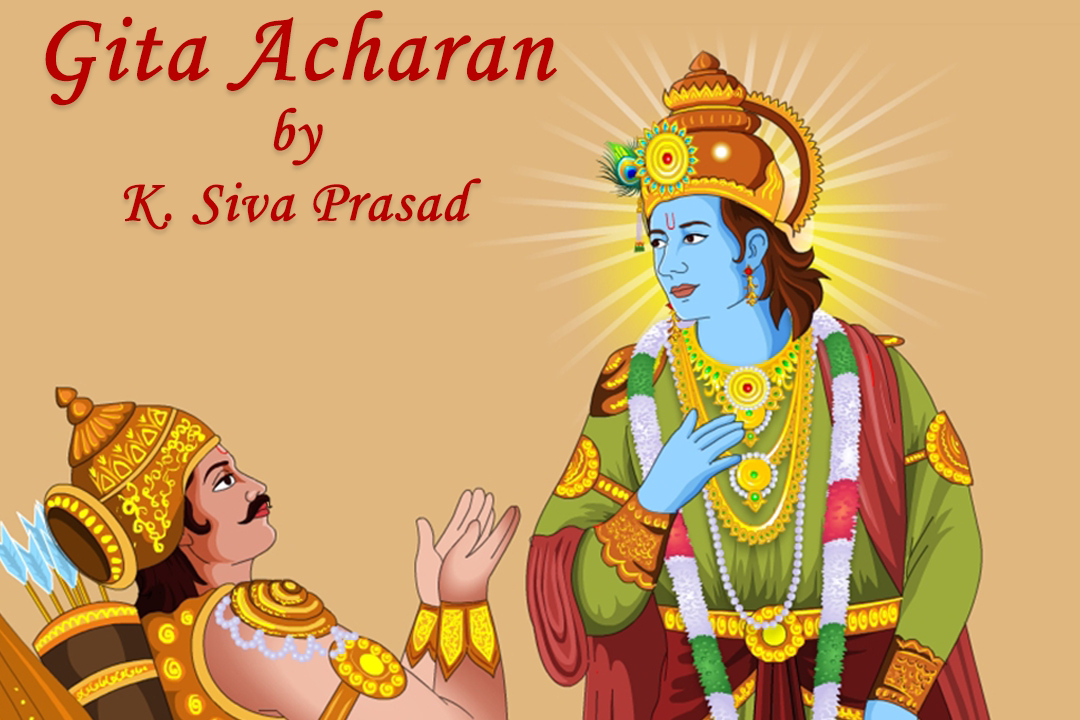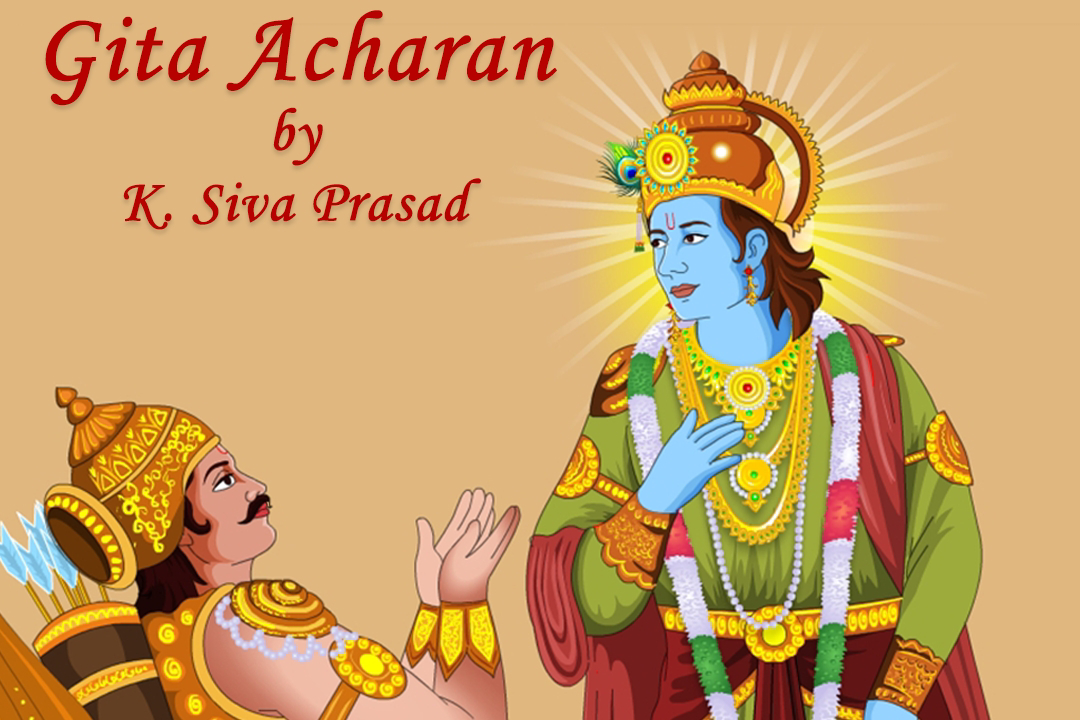73. Art of Surrender

Krishna tells Arjun (3.30) to relinquish all actions unto HIM; to be devoid of egotism (nir-mama) and desires (nir-aasha) ; and to fight without fever (jvar) . This verse is a summary of the Gita and it answers several of our doubts in daily life. Our first doubt is 'What to do', which arises because we are not happy with what we are doing as we feel that happiness is elsewhere in another action. But this verse advises us to 'do the job in hand’, which may have been chosen by us or thrust upon us, to the best of our abilities. It could be as cruel and complex as the Kurukshetra war, where one would kill or be killed. Scientifically, our complex human body is the evolution from a single cell where each action (mutation) is linked to the previous one. So any action on hand is always a result of a series of past actions and there is no stand alone action. The next question is, 'How to do it'. The verse advises us to act by dropping ahankaar , desires and



